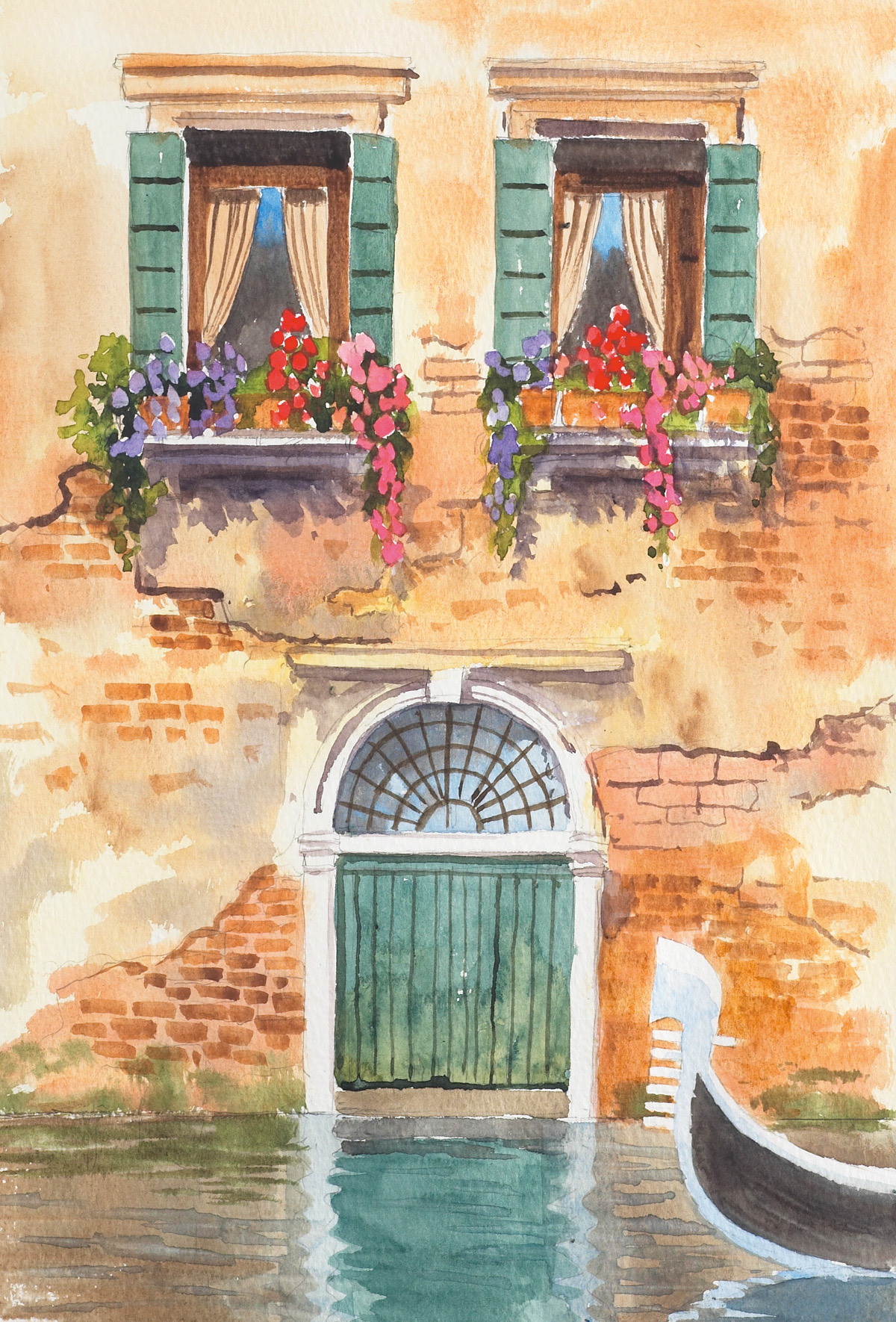

– Tissue Paper: Dab the wet watercolor painted paper with tissue paper to lift paint and create beautiful texture. – Bubble wrap, cling wrap, and foil: Dab wet watercolor paint on paper with these to create interesting texture. – Thick & Thin: Experiment with painting Thick & Thin lines Try fine and course salt, although my personal preference is course. Rub the salt off when it is completely dry. You’ll notice right away that the paint is drawn toward the salt and of course this creates texture as it dries. – Salt: Apply salt onto wet watercolor paint and then let it dry. – Sponge: Use a sponge to apply paint or lift off paint to create texture. – Wet-on-Dry Painting: Paint wet paint onto dry paper with this technique to get some crisp lines! Just don’t let the colors touch or you will get a bleed out, although I do rather like those myself! This is an important technique for developing textures exclusive to watercolor paints and for creating and developing beautiful gradients that can be used for water or your background. – Wet-on-Wet Painting: Water down the paper and then paint wet paint onto wet paper. Let’s get into a list of which ones to explore: WATERCOLOR PAINTING TECHNIQUES TO EXPLORE: Okay so enough ramblings on my WHY I really need to you start with exploring watercolor painting techniques. So even if you teach the same kids for years in a row… start here. As well, kids might not like art as much in grade 6 but in grade 7? It has become THEIR THING. For instance, I would at max try 3 techniques in kindergarten, but in High School I would ask a lot more… obviously. What I am saying is that you should never ever turn away the opportunity for artists to play and try things out for themselves and it doesn’t matter if they are in Kindergarten or high School, start with this but make it make sense for that age. As well, one time you might hate dry brush, but a year later you’ve forgotten about the experience and try it again and realize that you can get some interesting texture with them. As artists, we learn so much about how an art medium is used by us and how it reacts through experimenting and seeing what works and what simply doesn’t work. Honestly, it doesn’t matter what age or the experience they have had with watercolors in the past, any time you start a unit with Watercolor paints, start with experimenting with techniques. Experiment with a Range of Watercolor Techniquesīefore you start any bigger projects with your students, it is best to get them experimenting with watercolor painting techniques.


 0 kommentar(er)
0 kommentar(er)
